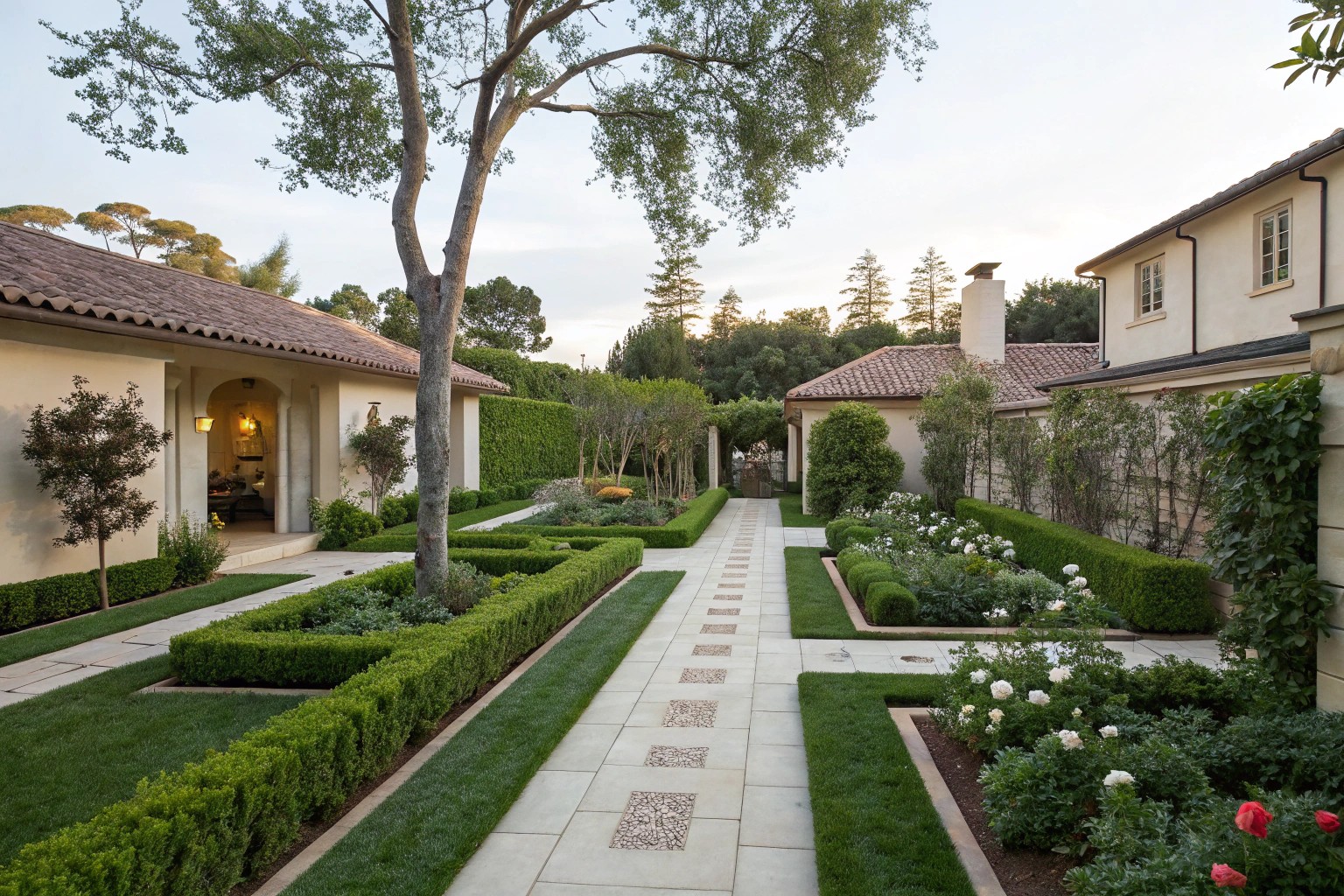Creating a beautiful garden doesn’t have to mean endless hours of maintenance. The secret to a stunning yet low-effort outdoor space lies in thoughtful design, smart plant selection, and efficient systems that do the work for you. After designing countless gardens for busy clients, I’ve compiled these professional insights to help you create a landscape that thrives with minimal intervention.
Smart Garden Planning Fundamentals

Before digging into any garden project, proper planning sets the foundation for long-term success. When designing low-maintenance gardens, I start by analyzing the specific conditions of the space. This includes assessing sunlight patterns, soil quality, drainage issues, and existing features worth preserving.
Site Assessment Checklist
A thorough site assessment will save countless hours of future maintenance. Before making any changes to your garden, consider:
- Sun exposure across different areas throughout the day
- Soil type and quality (clay, sand, loam)
- Natural drainage patterns and potential problem areas
- Existing mature plants worth keeping
- Your lifestyle needs and how you’ll use the space
- Local climate conditions and microclimate variations
The time invested in planning will pay dividends in reduced maintenance later. As search results reveal, “A good design will help you create a garden that is easy to manage”.
Plant Selection Strategies
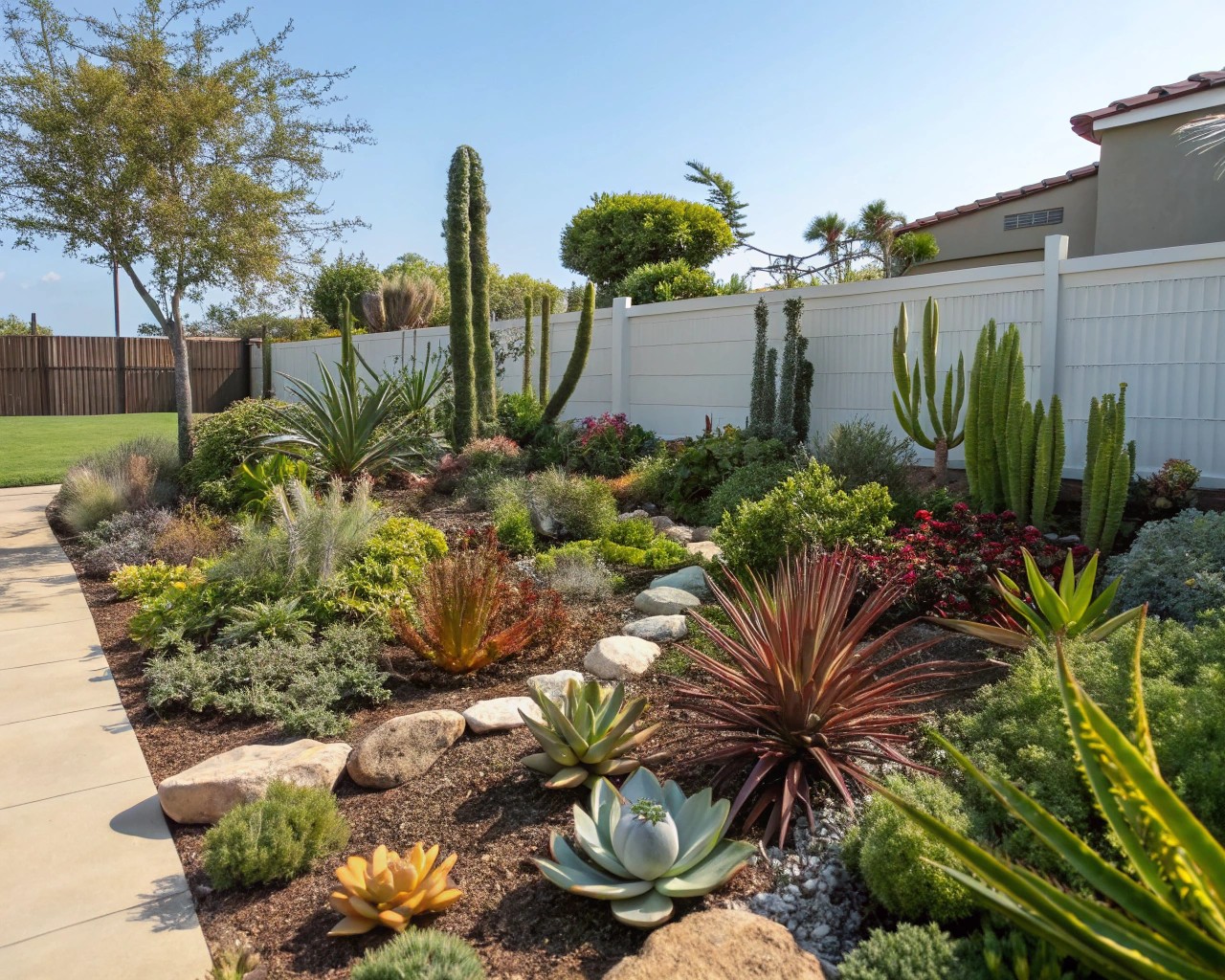
Choosing the right plants is perhaps the most critical aspect of creating a low-maintenance garden. Plants that thrive in your specific conditions will naturally require less intervention.
Native and Adaptive Species
Native plants have evolved to thrive in your local climate, making them remarkably self-sufficient once established. They typically require:
- Less supplemental watering
- Fewer fertilizers
- Minimal pest management
- Less pruning and overall care
For American gardens, consider regional natives that have adapted to your specific climate zone. These plants have developed natural defenses against local pests and diseases while becoming accustomed to rainfall patterns in your area.
Low-Maintenance Plant Recommendations
| Plant Type | Examples | Maintenance Level | Best Conditions |
|---|---|---|---|
| Perennials | Purple Shamrock, Hardy Geraniums | Very Low | Partial shade to sun |
| Shrubs | Rosemary, Juniper | Low | Full sun, well-drained soil |
| Ground Covers | Monkey Grass (Liriope), Lesser Periwinkle | Very Low | Shade to partial sun |
| Container Plants | Baby Rubberplant, Staghorn Fern | Low | Indirect light, occasional watering |
Many award-winning plant varieties have been specifically developed for disease resistance and long-lasting performance. Look for plants that have received accolades from horticultural societies, as these often represent the most trouble-free options.
Rethinking the Traditional Lawn
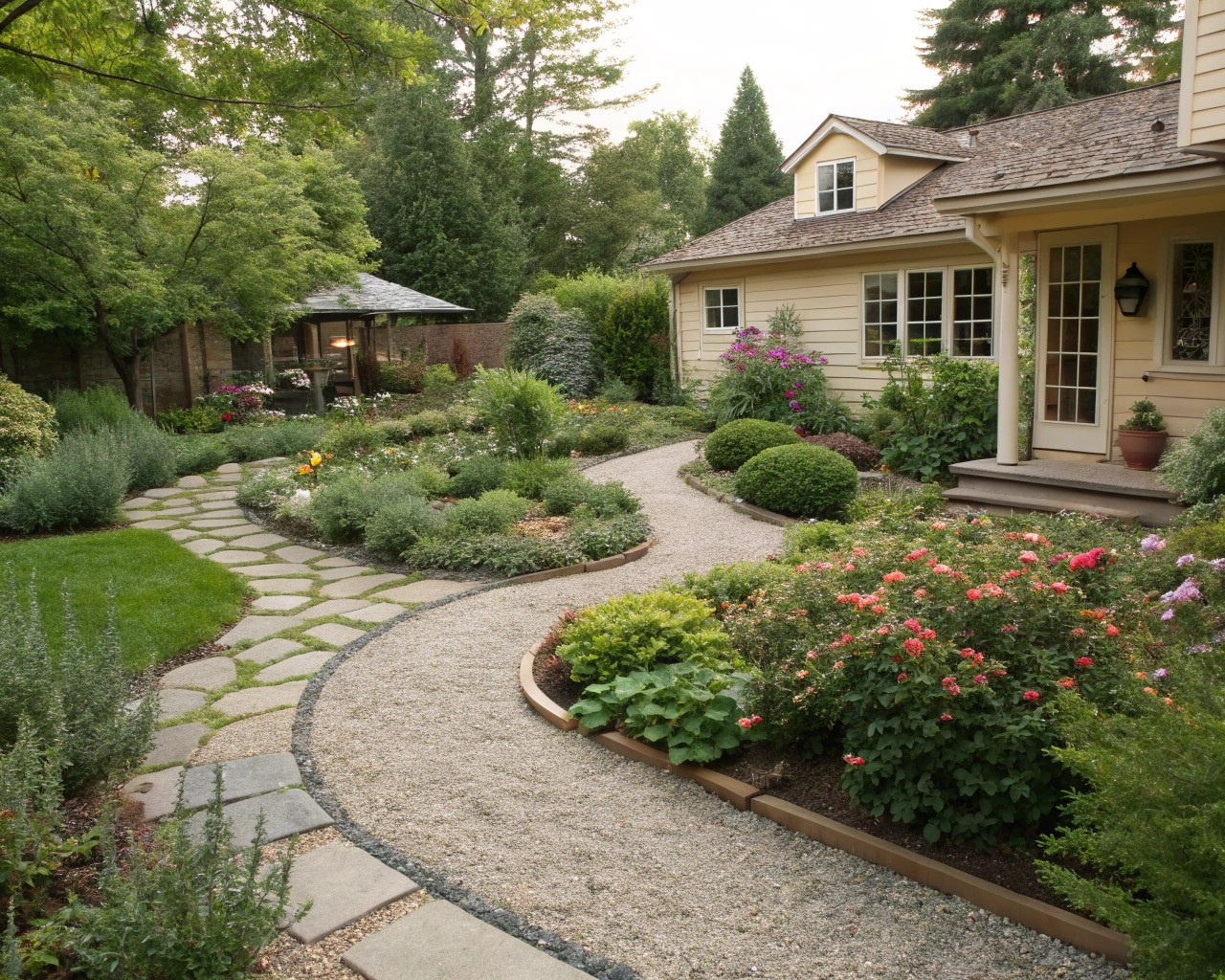
One of the most transformative decisions when creating a low-maintenance garden is rethinking the traditional lawn. While expansive grassy areas might seem like the default option, they demand regular mowing, watering, feeding, and weed control.
“If your garden is small and you don’t have children, ditch the lawn. Big borders and a reasonably-sized paved, gravelled or decked area will actually be less work than keeping a small area of grass looking good”.
Lawn Alternatives
Consider these practical alternatives to traditional lawns:
- Decorative gravel or stone areas with select ornamental grasses
- Hardscaped patios with container gardens
- Ground cover plantings that create living carpets
- Wood decking that requires only occasional sealing
- Native meadow areas with regional grasses and wildflowers
By replacing even a portion of your lawn with these alternatives, you’ll significantly reduce your maintenance workload while potentially creating more usable outdoor living space.
Ground Cover Mastery
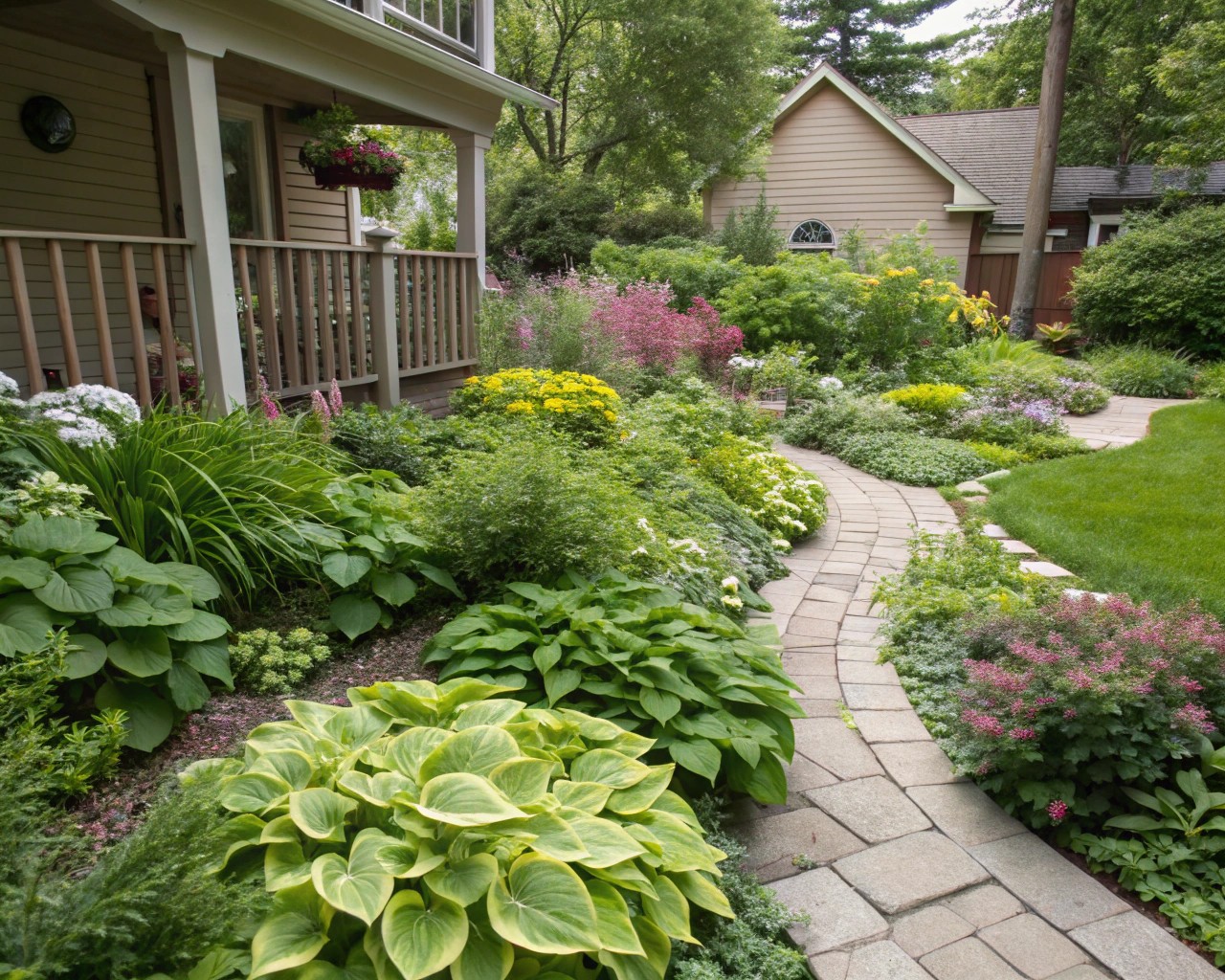
Ground covers serve multiple purposes in a low-maintenance garden. They suppress weeds by blocking sunlight, prevent soil erosion, retain moisture, and create visual continuity across the landscape.
“Ground cover plants are used to fill in gaps at the front of a border, as well as those tricky spots at the bases of shrubs that are difficult to plant. They can also help cover the bare ‘legs’ of roses, complementing their flowers”.
When selecting ground covers, match them to the specific light conditions of your space. Dense planting is key—when ground covers are properly spaced, they’ll quickly form a solid mat that prevents weed growth.
Top Ground Covers by Growing Condition
- Full Sun: Creeping Thyme, Sedum, Flower Carpet Roses
- Partial Shade: Hardy Geraniums, Bellflower (Campanula), Japanese Spurge
- Full Shade: Lily of the Valley, Lesser Periwinkle (Vinca)
Plant ground covers with adequate spacing to allow them to grow together over time, creating a seamless carpet that smothers potential weeds.
Automated Irrigation Systems
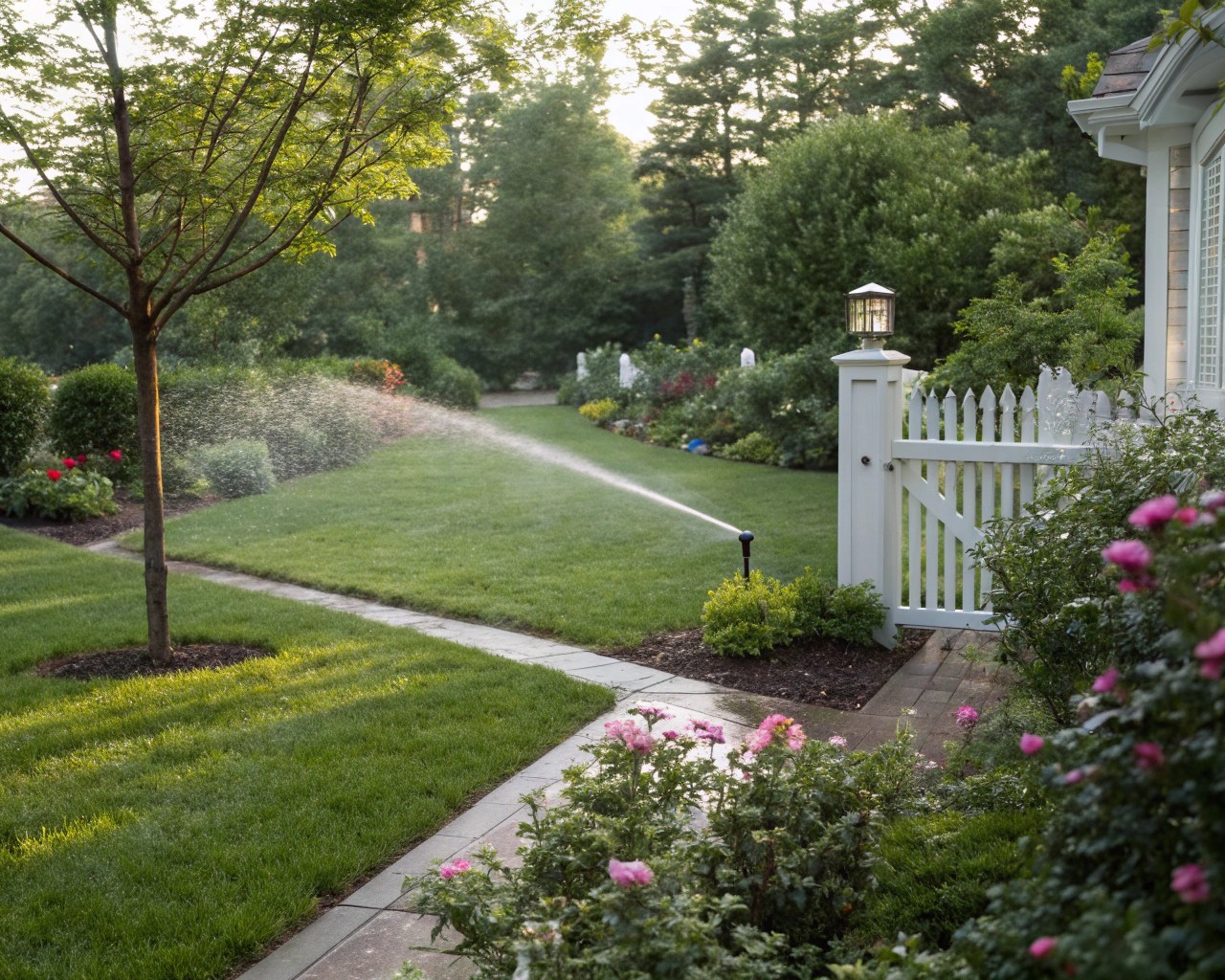
Perhaps the single most effective time-saving investment for any garden is an automated irrigation system. Modern systems have become increasingly sophisticated, efficient, and user-friendly.
“Automatic irrigation systems provide plants with the exact amount of water they need at the right time, preventing water waste. This is particularly beneficial for large gardens and lawns”.
Benefits of Automated Irrigation
- Water conservation: Smart systems adjust to weather conditions and soil moisture
- Plant health: Consistent watering promotes stronger root development
- Time savings: Eliminates the need for manual watering
- Precision: Delivers water directly to plant roots where needed
- Energy efficiency: Modern systems use minimal power
When designing an irrigation system, I recommend dividing your garden into hydrozones—grouping plants with similar water requirements together. This allows for targeted watering and prevents both over and under-watering issues.
For the most efficient system, consider integrating smart technology that monitors weather forecasts and soil moisture levels, automatically adjusting watering schedules to meet actual plant needs rather than following a fixed schedule.
Professional Weed Control Techniques
Weeds compete with garden plants for resources and can quickly overtake a space if not managed. The good news is that several design strategies can significantly minimize weed problems.
“Letting weeds take hold can cause them to outcompete your garden plants causing you to see a decline in their growth”.
Mulching for Weed Suppression
Applying a 2-3 inch layer of organic mulch like wood chips or bark serves multiple purposes:
- Blocks light to prevent weed germination
- Maintains soil moisture
- Adds nutrients to soil as it breaks down
- Creates a finished, polished look
When applying mulch, keep it slightly away from plant stems to prevent rot, and replenish it every couple of years as it decomposes.
Landscape Fabric Considerations
For more permanent weed control, particularly under gravel areas or pathways, landscape fabric can be effective. However, use it selectively as it can:
- Prevent beneficial soil organisms from moving freely
- Degrade over time if exposed to sunlight
- Interfere with natural soil processes
In most planted areas, organic mulch often proves more beneficial for long-term garden health than landscape fabric.
Minimalist Design Principles
Minimalist garden design focuses on simplicity, clean lines, and carefully selected elements. This approach not only creates a sense of calm but also inherently reduces maintenance needs.
“Minimalist patio ideas focus on simplicity and clean lines, often featuring a limited color palette and minimal decor. A small seating area, a single statement piece, and plenty of negative space create a sense of calm and serenity”.
Key Minimalist Design Strategies
- Limit plant variety: Use fewer species in larger groupings
- Create clean edges: Define spaces with crisp borders
- Simplify color palette: Choose a limited color scheme for cohesion
- Embrace negative space: Allow room for the eye to rest
- Prioritize function: Make every element serve a purpose
For small spaces, vertical gardening can maximize limited square footage while maintaining minimalist principles. Wall-mounted planters, trellises, and living walls add greenery without cluttering floor space.
Container Gardening Solutions
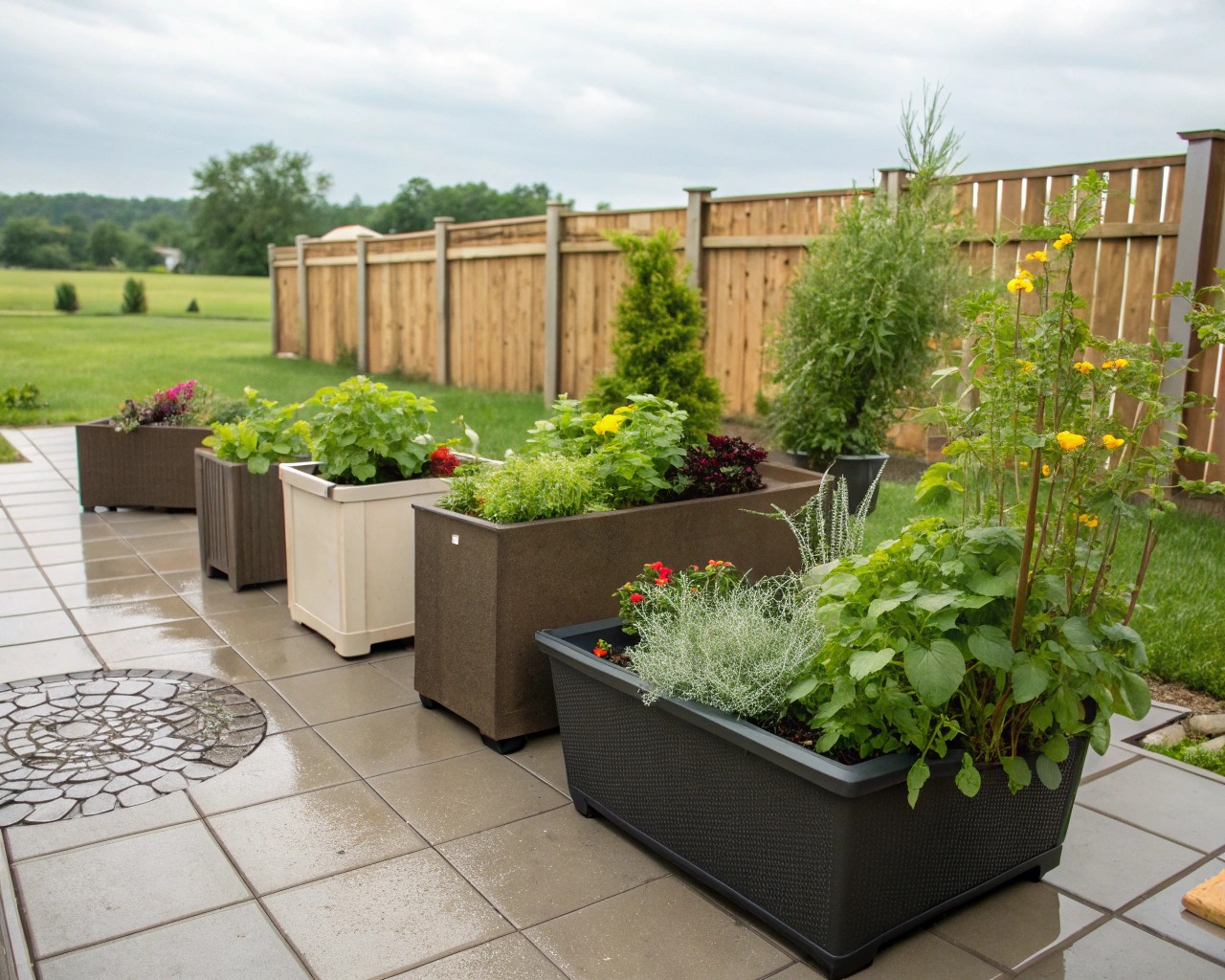
Large containers and planters offer advantages for those seeking low-maintenance options. They provide better control over soil conditions and often require less frequent watering than smaller pots.
“As a general rule of thumb, big pots are easier to look after than small ones. The smaller the pot, the quicker it dries out and the more watering it will need”.
When selecting containers:
- Choose large, substantial pots that hold moisture longer
- Group containers together to create humidity and reduce watering
- Select self-watering containers for the most trouble-free option
- Use quality potting mix specifically formulated for containers
For even lower maintenance, consider installing a drip irrigation system with a timer specifically for your container garden.
Seasonal Maintenance Calendar
Even low-maintenance gardens require some care. Creating a simplified seasonal schedule helps distribute tasks throughout the year and ensures nothing is overlooked.
Quarterly Maintenance Checklist
| Season | Essential Tasks | Time Commitment |
|---|---|---|
| Spring | Mulch application, Prune winter damage, Divide overcrowded perennials | 1 weekend |
| Summer | Occasional deep watering (if no irrigation), Deadhead spent flowers, Light pruning | 2-3 hours monthly |
| Fall | Remove fallen leaves from beds, Cut back perennials, Apply compost | 1 weekend |
| Winter | Prune dormant trees/shrubs, Plan for spring, Maintain hardscape elements | 1 day + planning time |
By distributing tasks throughout the year, no single season becomes overwhelming. The goal isn’t to eliminate maintenance entirely but to make it manageable and efficient.

